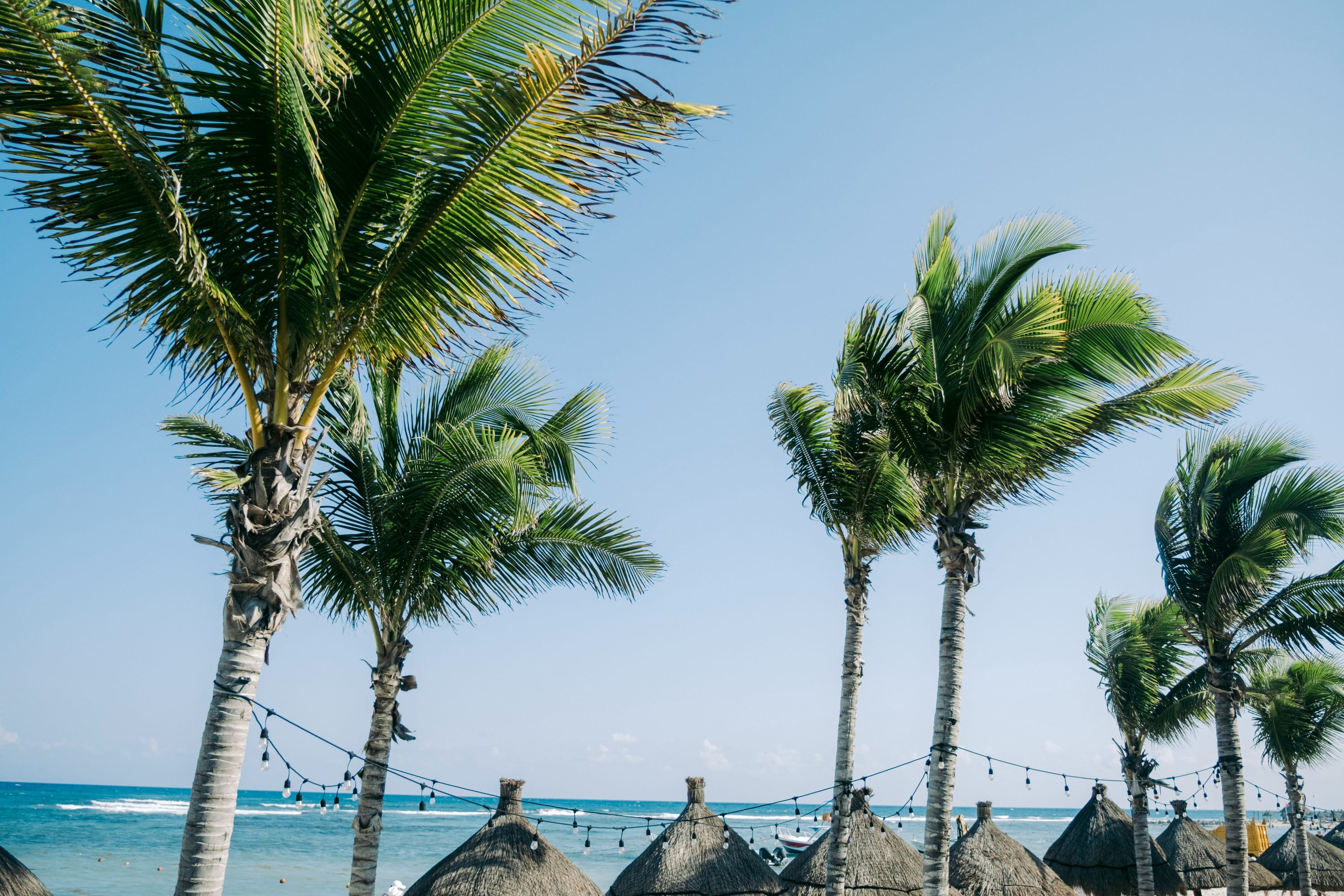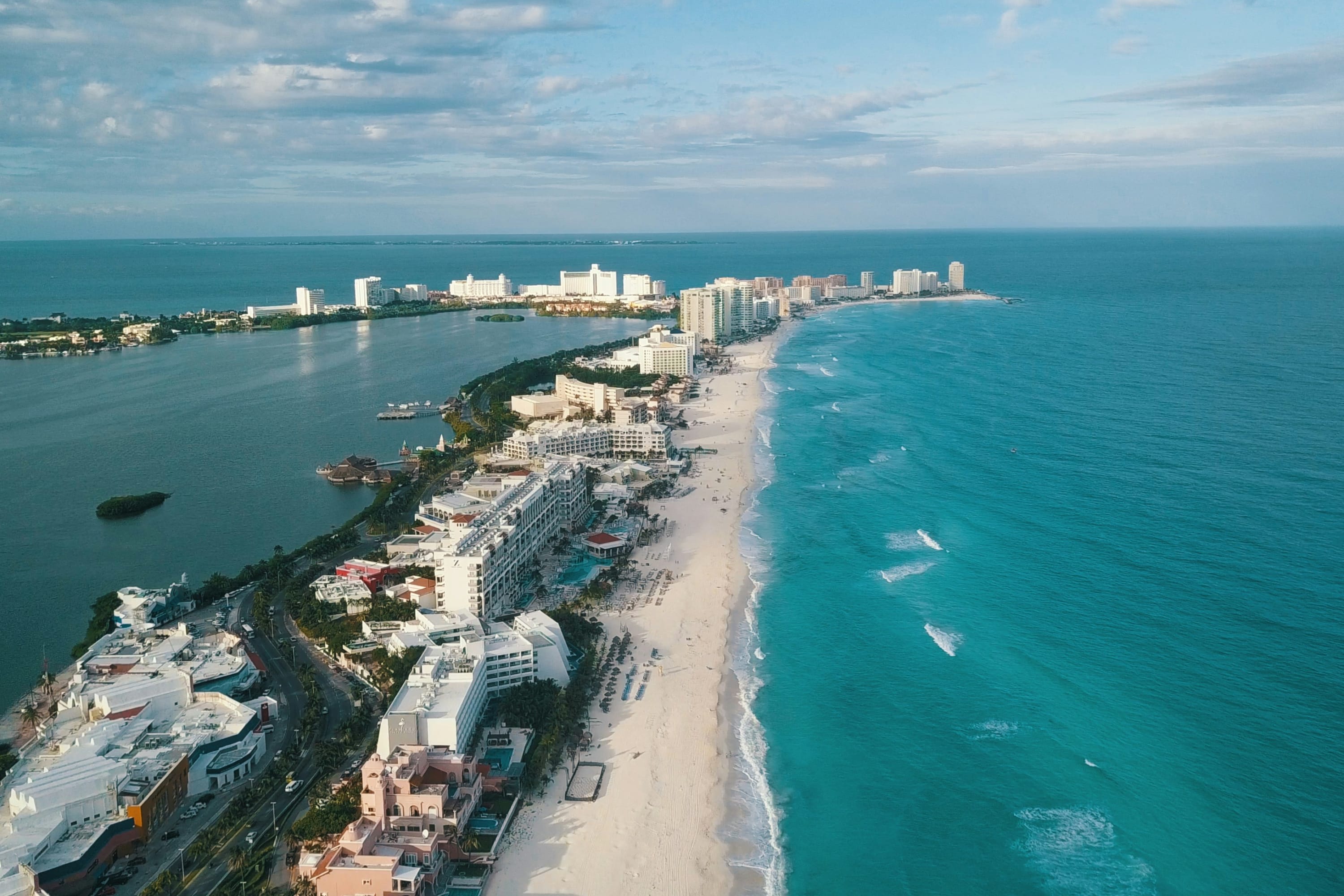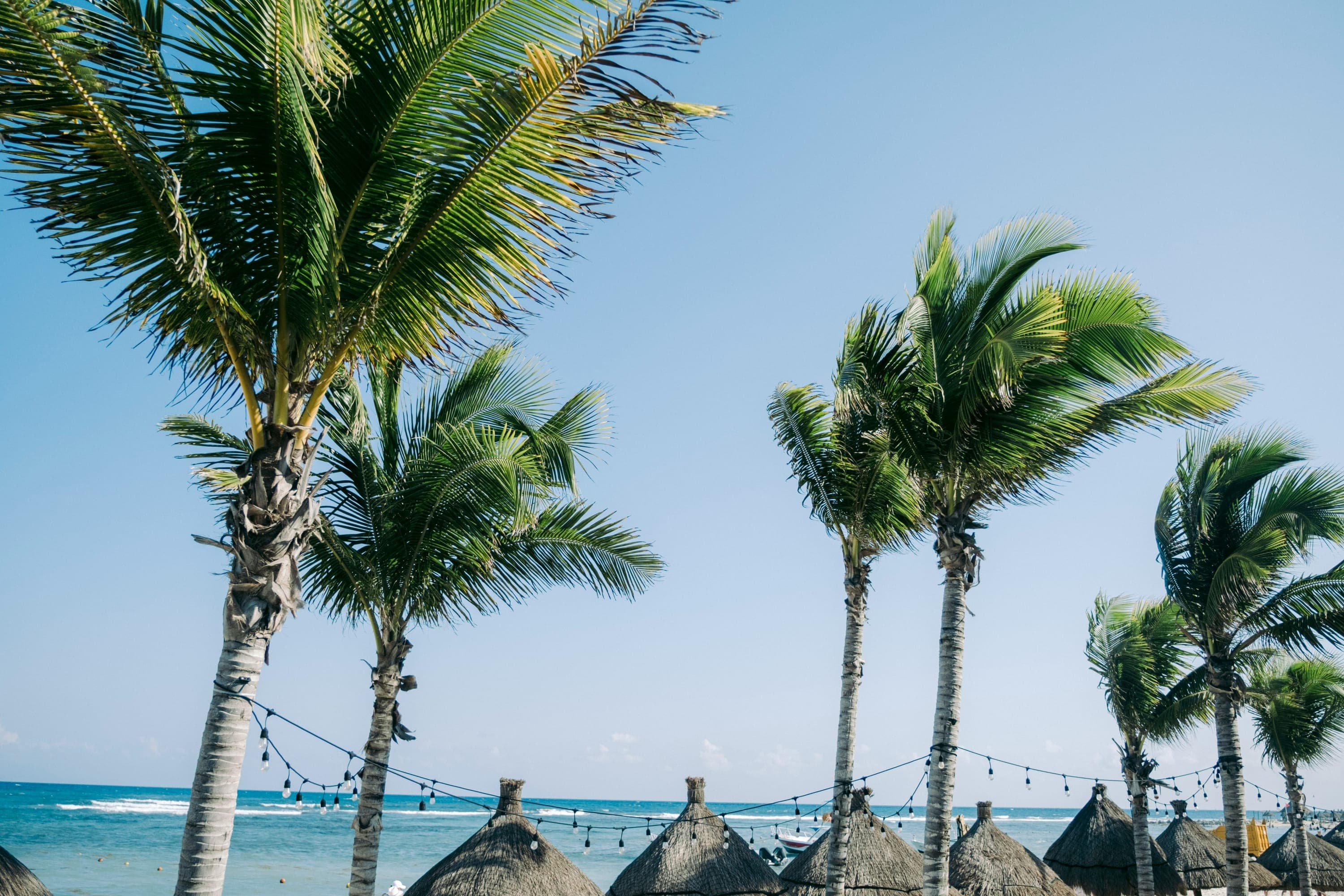
Cancún is famous for its gorgeous beaches, sunny year-round weather and warm water temperature. Some months are better than others, though. We asked Fora travel advisors for the best times to visit Cancún and broke the options down into three distinct periods: December to April, May to August and September to November.
December to April: the best time to visit Cancún for great weather and nightlife

“Cancún is a year-round destination, but I think it is a perfect place for the winter and spring months,” Fora X Advisor Erica Christie said. “In the summer, it can get very hot, and in the fall there is some concern about hurricanes.”
Virtually everyone we asked said that December through April is the best overall time to visit Cancún. The weather is comfortable and stable throughout this period, which kicks off with the holiday season and lasts through the end of spring break. Fora Advisor Heather Budd likes to recommend the festive period between Christmas and New Year’s for a “perfect sunny escape.”
Average daytime temperatures hover in the low 80s in December and January, gradually rising until they hit the low 90s by the end of April. Most days are sunny and water temperatures rarely budge from an average of 80℉, excellent for virtually any kind of water sport or activity (swimming, snorkeling, diving, kayaking). Rain is also rare, and when it does occur, it’s light, especially as you approach summer.
“My favorite time to go is early January, right after the festive season but before the spring break crowds,” Fora Advisor Nancy McLaughlin said.
She said the rates are better than what you’ll find in December and March. February and April — outside the holiday and spring break seasons, respectively — also see rate dips.
If you prefer a livelier visit, go during the holidays or spring break. Cancún has a vibrant nightlife scene both in and outside its resorts, and it peaks in December and March. Clubs, lounges and beach parties attract locals and international travelers from all over, usually to the beats of live DJs and other performers. For a more self-contained or exclusive experience, though, consider Cancún’s all-inclusive resorts. You can also find a quieter experience in nearby Riviera Maya (see how Riviera Maya compares to Cancún).
May to August: Cancún’s shoulder season (and the best time for rare wildlife encounters)

May to August are Cancún’s hottest months, with a notable increase in humidity. Later months also mark the beginning of peak hurricane season (we’ll get back to this). Outside of major events, crowds rarely exceed those in December or spring break — which may not be the best time to visit Cancún for families — but they are fairly consistent throughout the season. Fora Advisor Shrinal Patel added that you can often find great rates and promotions between mid-April and the end of May.
These months also hold a lesser-known reason to visit. Plankton blooms typically occur during this period, which in turn draw whale sharks from the open ocean. Many resorts across Cancún partner with charters that will safely allow you to see these massive animals in their natural habitat. If you’re feeling adventurous, there are also opportunities to dive with the sharks (they only eat plankton). Manta ray sightings also increase, and you can catch a glimpse of baby sea turtles’ mad dash to the sea on sanctuary beaches during this period.
Cancún’s hurricane season runs from June to November
Cancún's hurricane season spans June through November, with the greatest risk in September and October. The entire region is susceptible to tropical storms and hurricanes that often bring heavy rains, strong winds and occasional flooding. Major hurricanes are not an every-year occurrence, but even smaller storms can affect the beaches and resorts. On the other hand, local resorts are well prepared to manage adverse weather, and travel insurance can protect your investment in your trip and offer peace of mind (yes, travel insurance is worth it). Plus, hurricanes and their paths are usually spotted well in advance, so you have time to adjust arrangements if necessary.
“Make sure to purchase travel insurance as soon as you book,” Nancy said. “Once a storm is named, it’s no longer covered.”
If you’re unwilling to brave hurricane season (we don’t blame you), consider visiting Mexico’s Pacific coast instead. Many of Mexico’s top all-inclusive family resorts are in Puerto Vallarta and Cabo, for example, and these areas also cater well to adults (see how Cabo compares to Cancún).
September to November: the best time to visit Cancún for better rates (but there are risks)

September and October see Cancún's smallest crowds and best rates. But of all the months to pick, these months also present the largest obstacles. For one, this is peak hurricane season. While rates are better, even at the top Cancún beachfront resorts, if you want to protect your investment from storm-related cancellations, you’re likely going to pay a higher fee for travel insurance. Right off the bat, this may negate some of your potential room discounts (though perhaps not enough to offset the discounts).
September and October retain most of summer’s heat, but also bring the area’s highest average humidity and rainfall — about nine inches per month. To top it off, sargassum seaweed blooms tend to occur around this time, disrupting otherwise clearwater beaches.
November is still part of hurricane season, but major storms are less common. If you don’t mind a storm (travel insurance can help you hedge that bet), you’ll still enjoy reasonable rates, fewer crowds and only slightly lower daytime temperatures. Outside of hurricanes, rainfall tends to drop off by November, too.
More Mexico and Caribbean travel inspiration
Read about more destinations across Mexico and the Caribbean.

